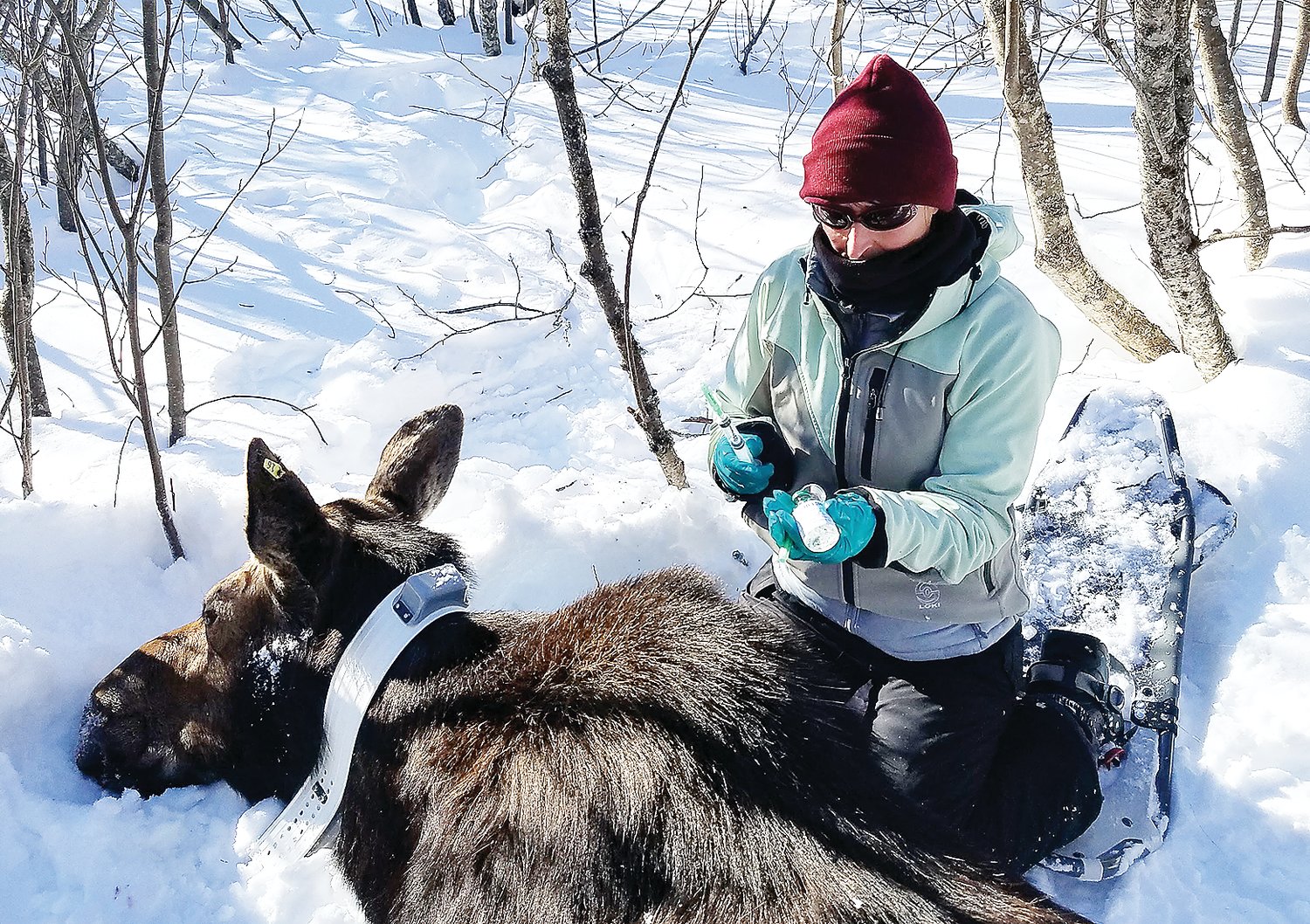Support the Timberjay by making a donation.
Study zeroes in on brainworm
Researchers hope to assess if forest management changes could aid moose
REGIONAL— For years, wildlife managers have worked to aid northeastern Minnesota’s moose population by keeping deer numbers low in the region’s primary moose range.
Whitetailed deer are …
This item is available in full to subscribers.
Attention subscribers
To continue reading, you will need to either log in to your subscriber account, below, or purchase a new subscription.
Please log in to continue |
Study zeroes in on brainworm
Researchers hope to assess if forest management changes could aid moose
REGIONAL— For years, wildlife managers have worked to aid northeastern Minnesota’s moose population by keeping deer numbers low in the region’s primary moose range.
Whitetailed deer are carriers of a parasitic brainworm, known as P. tenuis, that is harmless to deer but is often fatal to moose. As the density of the region’s deer population has increased, due to factors like climate change and recreational winter deer feeding, more moose are succumbing to the effects of P. tenuis and biologists believe that’s one of the factors behind recent declines in the region’s moose population.
But what if there were other ways to reduce the incidence of brainworm in moose, that didn’t require limiting the population of whitetail deer? That’s the idea behind a new study now being pursued with a $400,000 investment from the state’s Environment and Natural Resources Trust Fund. Researchers from the University of Minnesota, the Grand Portage Band, and Virginia Tech University are collaborating to learn more about the mechanisms that facilitate the transmission of P. tenuis , in hopes of discovering ways that forest management changes can help to reduce the rate of the spread of the brainworm to moose.
This same team of researchers has found that P. tenuis accounted for 25-33 percent of the moose fatalities in a sizable population of collared moose they’ve been studying on the Grand Portage reservation since 2013, so finding ways to discourage transmission of the disease could have a significant beneficial effect on moose numbers.
Thanks to highly-detailed data collection available from about 130 GPS-collared moose and about 70 whitetail deer at Grand Portage, tribal biologist Seth Moore said the research team now has the ability to clearly map how both species make use of the landscape. “Moose probably use about fifty-percent of the land base on the reservation,” said Moore. “Deer probably use 60-70 percent, but there’s only a small area of overlap. We suspect it’s in that overlap where the transmission is occurring.”
By studying those overlapping areas in depth, the researchers hope to understand if specific types of forest habitat are responsible for the bulk of transmission of the brainworm to moose. According to Moore, if researchers can determine specific habitat types where most transmission occurs, forest and wildlife managers can use that information to try to reduce that type of habitat in areas where both deer and moose are found. “If we can break this vector chain through habitat management, then we could manage for both high moose populations and high deer populations,” said Moore.
Other key to transmission
The research effort is complicated by the fact that P. tenuis is typically not transmitted directly from deer to moose. Instead, the transmission chain includes what’s known as an “intermediate host,” in this case forest snails and slugs that inadvertently absorb brainworm larvae as they travel across the forest floor and come in contact with deer droppings. While moose don’t intentionally consume slugs and snails, they do consume them inadvertently as they browse on forest vegetation.
Most of those slugs and snails are not infected with the brainworm, which means they pose no risk to moose, but as whitetail deer density increases on the landscape, the percentage of the snails and slugs that are infected naturally increases, raising the risk of transmission to moose.
While complicating the transmission picture, the existence of an intermediate host presents opportunity as well, says Tiffany Wolf, assistant professor, Veterinary Population Medicine, University of Minnesota College of Veterinary Medicine, who is a co-lead in the research. “The transmission of this parasite through a third host presents additional opportunities to impact transmission. It’s certainly a complex pathway, and there are a lot of gaps in our knowledge about where and when transmission to moose occurs. But, thanks to this support, we have an opportunity to close some of those gaps,” said Wolf.
As part of the research, Wolf will be examining genetic information from a variety of samples in hopes of better understanding which species of slugs and snails are most responsible for the transmission of brainworm to moose. Then, by understanding how those individual species utilize the forest landscape, researchers hope to find ways that forest management could discourage the spread of those species, particularly in areas where deer and moose occupy the same habitat. “There could be some form of a landscape barrier,” said Wolf.
In the end, the research team hopes to be able to develop detailed maps showing the areas and habitat types that pose the biggest risk of brainworm transmission, which may be able to help land managers aid moose without targeting deer populations.
Wolf said having new options for moose management may be critical to the species’ survival. “For a long time, the recommendation has been to reduce deer populations, but that’s hard for a lot of people to accept,” said Wolf. “This is an opportunity to explore other options,” she said.
“The Minnesota Legislature has helped us further our college’s mission by supporting this work,” says Dr. Molly McCue, interim associate dean for research at the University of Minnesota College of Veterinary Medicine. “They have emboldened our talented researchers to help solve some of the issues faced by Minnesota, and we are incredibly grateful for their investment in our work.”






